Glycolysis: The Essential Metabolic Pathway
Concept Map
Glycolysis is a fundamental metabolic pathway that converts glucose into pyruvate, yielding ATP and NADH for cellular energy. It involves ten enzyme-catalyzed steps, divided into energy investment and payoff phases. This process is crucial for both aerobic and anaerobic respiration, providing energy and metabolic intermediates. Glycolysis also offers insights into the evolutionary history of metabolism, highlighting its ancient origins and essential role in early life forms.
Summary
Outline
Exploring the Basics of Glycolysis: The Central Metabolic Pathway
Glycolysis is an essential metabolic pathway that marks the beginning of both aerobic and anaerobic respiration. Occurring in the cytoplasm of cells, it involves the enzymatic breakdown of glucose, a six-carbon sugar molecule, into two molecules of pyruvate, each containing three carbons. Glycolysis consists of ten enzyme-catalyzed steps, grouped into two phases: the energy investment phase and the energy payoff phase. The overall reaction of glycolysis can be represented as: C6H12O6 + 2 ADP + 2 Pi + 2 NAD+ → 2 C3H4O3 + 2 ATP + 2 NADH + 2 H+. This equation encapsulates the conversion of glucose into pyruvate, the generation of a net gain of two ATP molecules, and the reduction of NAD+ to NADH, which is crucial for subsequent stages of cellular respiration.The Energy Investment Phase of Glycolysis
The energy investment phase is the initial stage of glycolysis, where two ATP molecules are consumed to activate glucose and facilitate its subsequent breakdown. The process begins with the phosphorylation of glucose to glucose-6-phosphate by the enzyme hexokinase, which requires one ATP molecule. Glucose-6-phosphate is then isomerized to fructose-6-phosphate by phosphoglucose isomerase. The key regulatory enzyme phosphofructokinase-1 (PFK-1) catalyzes the phosphorylation of fructose-6-phosphate to fructose-1,6-bisphosphate, utilizing a second ATP molecule. These phosphorylation events trap glucose within the cell and increase its chemical reactivity. Aldolase then cleaves fructose-1,6-bisphosphate into two three-carbon isomers: glyceraldehyde-3-phosphate (G3P) and dihydroxyacetone phosphate (DHAP). Triose phosphate isomerase rapidly interconverts DHAP and G3P, ensuring that both molecules can feed into the second phase of glycolysis.The Energy Payoff Phase of Glycolysis
The energy payoff phase of glycolysis is characterized by the generation of ATP and the production of pyruvate. Each molecule of G3P is oxidized by the enzyme glyceraldehyde-3-phosphate dehydrogenase (GAPDH), resulting in the formation of 1,3-bisphosphoglycerate (1,3-BPG) and the reduction of NAD+ to NADH. The enzyme phosphoglycerate kinase then catalyzes the substrate-level phosphorylation of ADP to ATP, converting 1,3-BPG to 3-phosphoglycerate. This is followed by the rearrangement of 3-phosphoglycerate to 2-phosphoglycerate by phosphoglycerate mutase, and the dehydration of 2-phosphoglycerate to phosphoenolpyruvate (PEP) by enolase. Finally, pyruvate kinase facilitates the transfer of a phosphate group from PEP to ADP, yielding a second molecule of ATP and pyruvate. The net result is a gain of two ATP molecules per original glucose molecule, as four ATPs are produced and two are used in the investment phase.The Integral Role of Glycolysis in Cellular Respiration
Glycolysis is a pivotal metabolic pathway that supplies cells with ATP and intermediates for further energy-yielding processes. The net production of two ATP molecules per glucose molecule through glycolysis provides immediate energy for cellular functions. The two NADH molecules produced carry high-energy electrons to the electron transport chain, where they contribute to the generation of additional ATP during oxidative phosphorylation. The end products, two molecules of pyruvate, are key intermediates in metabolism; under aerobic conditions, they are transported into the mitochondria to be further oxidized in the citric acid cycle, while under anaerobic conditions, they can be converted into lactate in animals or ethanol in yeast, regenerating NAD+ to sustain glycolysis.Glycolysis as a Window into Evolutionary History
The widespread presence of glycolysis across various life forms and its ability to function in the absence of oxygen or specialized cellular compartments underscore its ancient evolutionary origins and significance. The enzymes for glycolysis are located in the cytoplasm, suggesting that this pathway predates the evolution of organelles like mitochondria and could operate in the anaerobic conditions of early Earth. This evidence points to glycolysis as one of the earliest forms of metabolism, providing a reliable source of energy and building blocks for primitive life forms and playing a foundational role in the evolution of more complex metabolic pathways.Show More
Overview of Glycolysis
Definition of Glycolysis
Glycolysis is a metabolic pathway that breaks down glucose into pyruvate, producing ATP and NADH
Phases of Glycolysis
Energy Investment Phase
The first phase of glycolysis involves the consumption of ATP to activate glucose and facilitate its breakdown
Energy Payoff Phase
The second phase of glycolysis involves the production of ATP and pyruvate
Importance of Glycolysis
Glycolysis is a crucial pathway for providing cells with immediate energy and intermediates for further energy-yielding processes
Enzymes Involved in Glycolysis
Hexokinase
Hexokinase is the enzyme responsible for phosphorylating glucose to glucose-6-phosphate in the first step of glycolysis
Phosphofructokinase-1 (PFK-1)
PFK-1 is the key regulatory enzyme that catalyzes the phosphorylation of fructose-6-phosphate to fructose-1,6-bisphosphate in the energy investment phase of glycolysis
Pyruvate Kinase
Pyruvate kinase facilitates the transfer of a phosphate group from phosphoenolpyruvate to ADP, producing ATP and pyruvate in the final step of glycolysis
Products and Significance of Glycolysis
ATP Production
Glycolysis produces a net gain of two ATP molecules per glucose molecule through substrate-level phosphorylation
NADH Production
Glycolysis also produces two molecules of NADH, which carry high-energy electrons to the electron transport chain for further ATP production
End Products of Glycolysis
The end products of glycolysis, pyruvate, can be further oxidized in the citric acid cycle under aerobic conditions or converted into lactate or ethanol under anaerobic conditions





